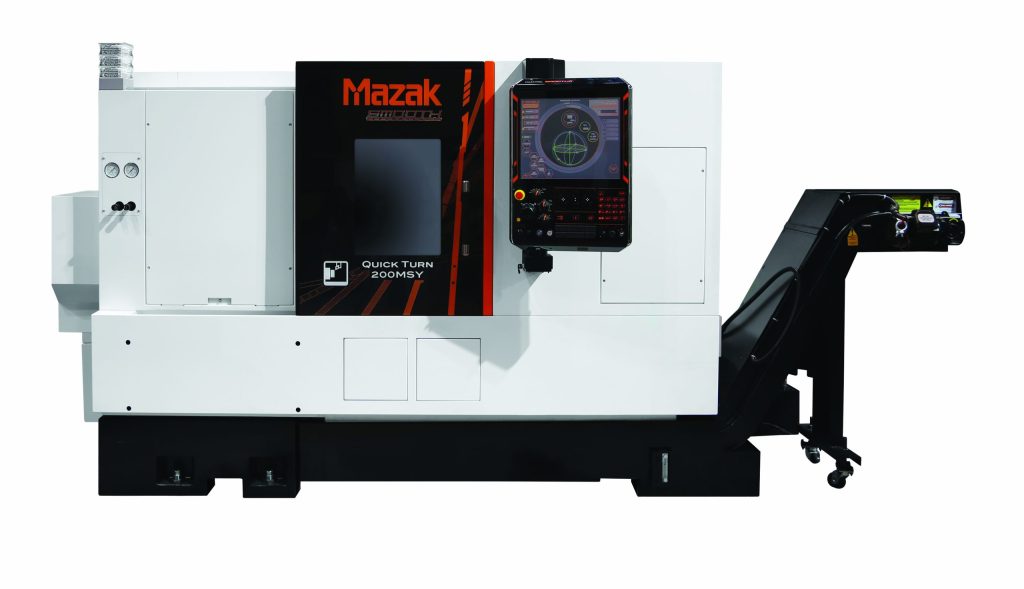Quick Turn-200MSY Turning Center
Quick Turn-200MSY Turning Center
Mazak's Quick Turn-200MSY turning center combines several features that allow shops to boost productivity and profitability. These include a direct servo-driven turret design, integral motor main and second spindle design, a faster, more powerful milling spindle and Mazak's Mazatrol SmoothG CNC.

Mazak's Quick Turn-200MSY turning center combines several features that allow shops to boost productivity and profitability. These include a direct servo-driven turret design, integral motor main and second spindle design, a faster, more powerful milling spindle and Mazak's Mazatrol SmoothG CNC.
The Quick Turn-200MSY – with multitasking functionality – has two turning spindles, a rotary tool milling spindle and Y-axis capabilities for single setup Done In One precision part processing operations. The machine's optional 16-position, direct servo-driven turret eliminates the use of belts for increased rpm, improved part surface finishes, reduced maintenance and more total tool holders to support complex part features. It accepts either VDI or bolt-on tooling.
The turret's direct-drive rotary tool spindle is 10-hp, 6,000-rpm standard. This faster rotary spindle provides 35 ft.-lbs. of torque, and with an optional tooling package, 10,000 rpm is available.
The machine's headstock features an 8" main chuck capacity on a 35-hp, 5,000-rpm integrated spindle motor for heavy-duty metal removal. The main turning spindle also serves as a C-axis that is programmable in 0.0001-degree increments to accurately position parts for square facing, milling flats, slotting cuts and precisely drilled holes. A second 10-hp, 6,000-rpm turning spindle that performs automatic workpiece transfer for secondary operations and accommodates a 6" chuck allows the Quick Turn-200MSY to machine small diameter workpieces with speed and accuracy.
Paired with Mazak's Mazatrol SmoothG CNC, the machine offers EIA/ISO programming, as well as conversational programming, that makes it easy to generate programs for complex drilling, milling or tapping operations. The control also features advanced hardware and software functions that help ensure high productivity and performance accuracy in challenging part production operations.
For improved spindle utilization and a significant boost in overall productivity, a variety of automation strategies integrate with the Quick Turn-200MSY, from an automatic bar feeder with parts catcher system to factory integrated gantry robot.





